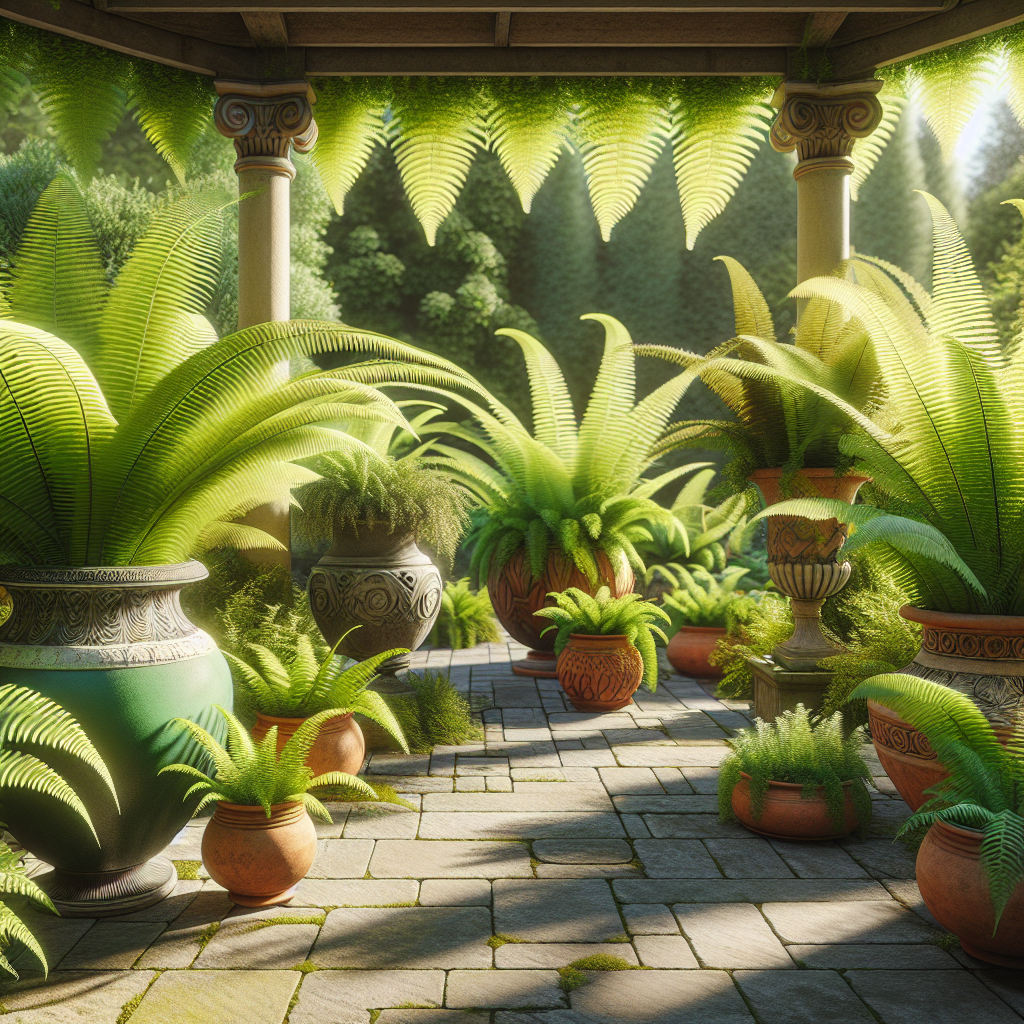Table of Contents
When it comes to transforming your patio into a lush and inviting space, ferns in containers can be a game-changer. These versatile plants not only add a touch of elegance and greenery to your outdoor space but also require minimal maintenance, making them an ideal choice for both novice and experienced gardeners alike.
Whether you have a small balcony or a spacious backyard, ferns in containers can help create a cozy and relaxing atmosphere. From hanging baskets to decorative pots, there are endless ways to incorporate these beautiful plants into your patio decor. In this article, we will explore the many benefits of using ferns in containers and provide tips on how to care for them effectively. Get ready to transform your patio into a botanical paradise!
The Benefits of Using Ferns in Containers
One of the main advantages of using ferns in containers is their versatility. Ferns come in a wide variety of shapes, sizes, and colors, making it easy to find the perfect plant to suit your patio decor. Whether you prefer delicate fronds or bold foliage, there is a fern out there for everyone.
Types of Ferns for Containers
When selecting ferns for your patio containers, it’s essential to consider the specific growing conditions of your outdoor space. Some ferns thrive in shady areas with moist soil, while others prefer drier conditions and indirect sunlight. Here are some popular types of ferns that are well-suited for container gardening:
Maidenhair Fern (Adiantum)
Maidenhair ferns are known for their delicate foliage and graceful appearance. These plants thrive in shady areas with well-draining soil and high humidity levels. Maidenhair ferns are perfect for adding a touch of elegance to hanging baskets or decorative pots on your patio.
Boston Fern (Nephrolepis exaltata)
Boston ferns are one of the most popular choices for container gardening due to their lush foliage and easy maintenance. These plants prefer indirect sunlight and regular watering to keep their fronds looking healthy and vibrant. Boston ferns can be displayed in hanging baskets or large pots on your patio.
Kangaroo Paw Fern (Microsorum diversifolium)
Kangaroo paw ferns are named for their unique fronds that resemble kangaroo paws. These plants thrive in bright, indirect light and well-draining soil. Kangaroo paw ferns add a playful touch to any patio container garden and can be displayed in decorative pots or terracotta planters.
Tips for Caring for Ferns in Containers
To ensure that your ferns thrive in their container gardens, it’s essential to provide them with the proper care and maintenance. Here are some tips for caring for ferns in containers:
Watering:
Ferns require consistent moisture to keep their fronds looking lush and healthy. Water your container-grown fern regularly, ensuring that the soil remains evenly moist but not waterlogged. Be sure to check the moisture level of the soil regularly, especially during hot weather when evaporation rates are higher.
Light:
Most fern species prefer indirect light or shaded conditions, as direct sunlight can scorch their delicate foliage. Place your container-grown fern in an area that receives bright but filtered light throughout the day. If you notice that your plant’s leaves are turning yellow or brown, it may be receiving too much direct sunlight.
Fertilizing:
During the growing season (spring through fall), fertilize your container-grown fern every 4-6 weeks with a balanced liquid fertilizer diluted according to package instructions. Avoid over-fertilizing as this can lead to salt buildup in the soil and damage the plant’s roots.
Frequently Asked Questions (FAQ)
Q: Can I use any type of potting soil for my container-grown fern?
A: While most general-purpose potting mixes work well for planting ferns in containers,
it’s best to use a mix specifically formulated for indoor plants or acid-loving
plants like azaleas.
Q: How often should I repot my container-grown
fern?
A: It’s best practice
to repot your
container-grown
fern every 1-2 years
to refresh the soil
and provide more
room for growth.
Choose a slightly
larger pot than its
current one when
repotting.













